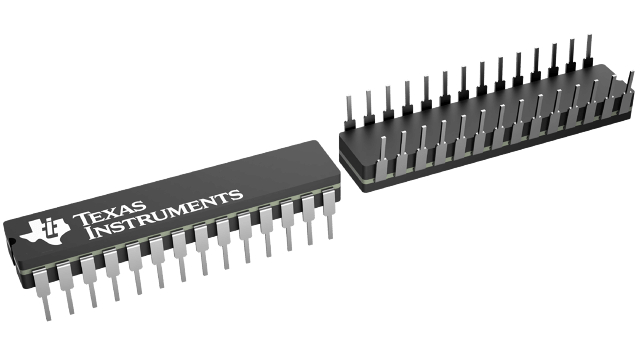
SNJ54ABT8652JT
ActiveSCAN TEST DEVICES WITH OCTAL BUS TRANSCEIVERS AND REGISTERS
Deep-Dive with AI
Search across all available documentation for this part.

SNJ54ABT8652JT
ActiveSCAN TEST DEVICES WITH OCTAL BUS TRANSCEIVERS AND REGISTERS
Technical Specifications
Parameters and characteristics for this part
| Specification | SNJ54ABT8652JT |
|---|---|
| Logic Type | Scan Test Device with Bus Transceiver and Registers |
| Mounting Type | Through Hole |
| Number of Bits | 8 |
| Operating Temperature [Max] | 125 °C |
| Operating Temperature [Min] | -55 °C |
| Package / Case | 7.62 mm |
| Package / Case | 0.3 in |
| Package / Case | 28-CDIP |
| Supplier Device Package | 28-CDIP |
| Supply Voltage [Max] | 5.5 V |
| Supply Voltage [Min] | 4.5 V |
Pricing
Prices provided here are for design reference only. For realtime values and availability, please visit the distributors directly
| Distributor | Package | Quantity | $ | |
|---|---|---|---|---|
| Texas Instruments | TUBE | 1 | $ 113.11 | |
| 100 | $ 109.71 | |||
| 250 | $ 91.34 | |||
| 1000 | $ 85.04 | |||
Description
General part information
5962-9461601 Series
The 'ABT8652 scan test devices with octal bus transceivers and registers are members of the Texas Instruments SCOPETMtestability integrated-circuit family. This family of devices supports IEEE Standard 1149.1-1990 boundary scan to facilitate testing of complex circuit-board assemblies. Scan access to the test circuitry is accomplished via the 4-wire test access port (TAP) interface.
In the normal mode, these devices are functionally equivalent to the 'F652 and 'ABT652 octal bus transceivers and registers. The test circuitry can be activated by the TAP to take snapshot samples of the data appearing at the device pins or to perform a self test on the boundary-test cells. Activating the TAP in normal mode does not affect the functional operation of the SCOPETMoctal bus transceivers and registers.
Data flow in each direction is controlled by clock (CLKAB and CLKBA), select (SAB and SBA), and output-enable (OEAB and) inputs. For A-to-B data flow, data on the A bus is clocked into the associated registers on the low-to-high transition of CLKAB. When SAB is low, real-time A data is selected for presentation to the B bus (transparent mode). When SAB is high, stored A data is selected for presentation to the B bus (registered mode). When OEAB is high, the B outputs are active. When OEAB is low, the B outputs are in the high-impedance state. Control for B-to-A data flow is similar to that for A-to-B data flow but uses CLKBA, SBA, andinputs. Since theinput is active low, the A outputs are active whenis low and are in the high-impedance state whenis high. Figure 1 shows the four fundamental bus-management functions that can be performed with the 'ABT8652.
Documents
Technical documentation and resources


